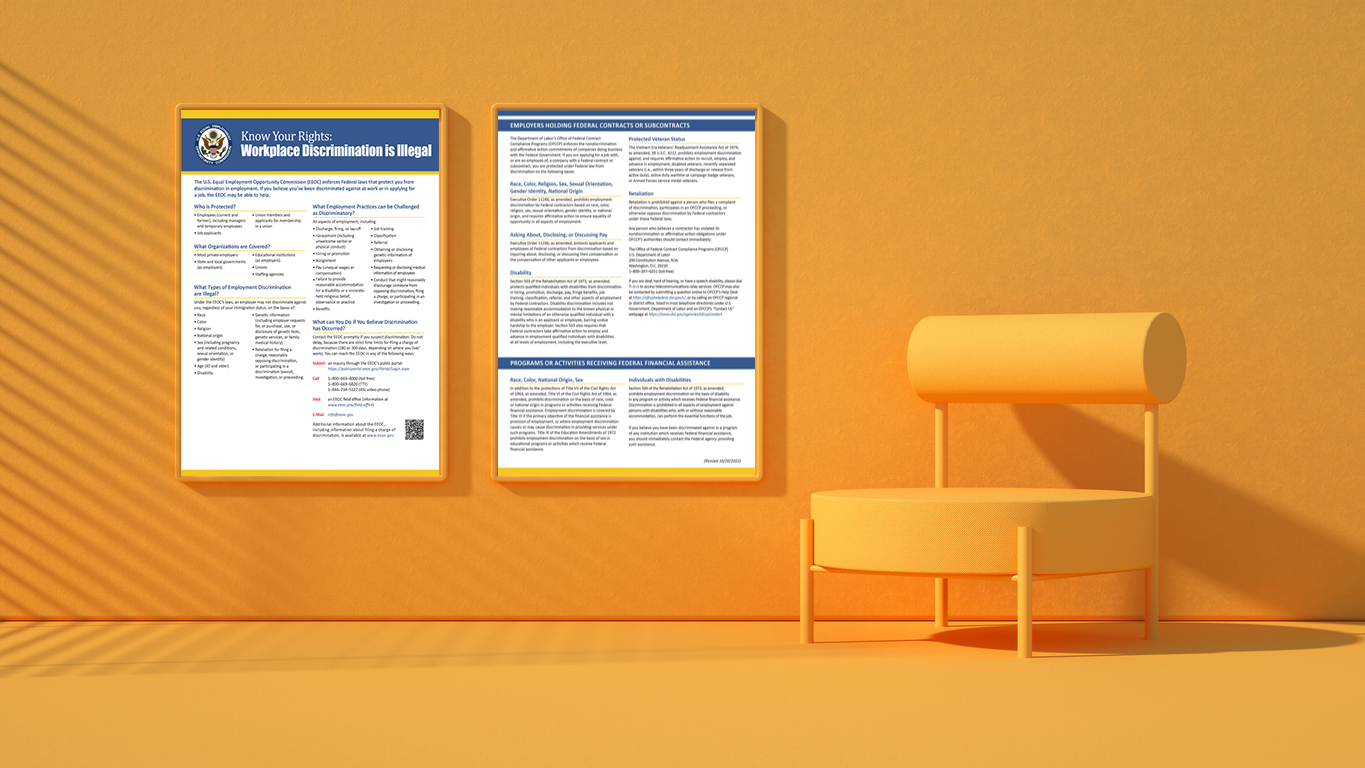The U.S. Equal Employment Opportunity Commission has released a new poster that certain employers need to display in their workplaces.
The poster, “Know Your Rights,” must be displayed by all employers who have 15 or more workers. It replaces the “EEO is the law” poster.
Why the update?
The EEOC said it had to update and modernize the old poster, adding clarification to some items and including a QR code that links to instructions for filing a discrimination charge on the agency’s website.
The EEOC said that the new poster simplifies the employer’s obligations and employees’ rights under federal EEO law.
The poster also clarifies the following:
- That harassment is a prohibited form of discrimination;
- That sex discrimination includes discrimination based on pregnancy, sexual orientation and gender identity; and
- Regarding restrictions applicable to federal contractors and subcontractors, including non-discrimination for asking about, disclosing or discussing their compensation or the compensation of others, affirmative action obligations, and non-discrimination based on race, color, religion, gender, sexual orientation, gender identity, disability, and veteran status.
Displaying the poster
The EEOC issued the new poster on Oct. 19 and employers who are subject to the law should start displaying it as soon as is practicable. You can download various forms of the poster here.
These posters should be placed in a conspicuous location in the workplace where other required notices to applicants and employees are customarily posted. That should be a high-traffic area for employees, such as in a breakroom or near a time clock.
The EEOC encourages employers to also post the notice digitally, perhaps on the employee section of their websites. For some companies that do not have a physical location or who have staff that exclusively work remotely, posting digitally may be the only option.
The poster summarizes federal laws prohibiting job discrimination based on:
- Race
- Color
- Sex (including pregnancy and related conditions, sexual orientation, or gender identity)
- National origin
- Religion
- Age (40 and older)
- Equal pay
- Disability
- Genetic information (including family medical history or genetic tests or services).
The poster also explains how an employee or job applicant can file a complaint if they believe they have been discriminated against. It includes a QR code they can scan and that will link their smartphone to the complaint web page.
